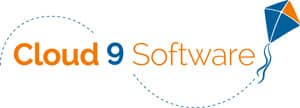Patient tracking tools can make all the difference in transforming prospective patients into new starts
By Greg Thompson
For many orthodontists, moving teeth is time-consuming enough without the additional task of mastering practice management software. Fortunately, cloud-based software options are increasingly intuitive, and worth the effort for office managers and clinicians who want to maximize capabilities. And while most orthodontists have the best of intentions when they spend the money on a new software, many fail to exploit the full menu of features. The result: A poor return on their investment.
Chris McElvy, senior trainer at Cloud 9 Software, has seen the phenomenon first-hand. “Some take the time to really set up everything and others are just going through the motions,” he says. “They say, ‘I’m here to straighten teeth. My staff will utilize what they want to utilize.’”
Beyond Diagnostic Records
According to Phyllis J. Fernandez, senior director of client onboarding at Cloud 9 Software, going from middle-of-the-road to highly successful may not be so difficult, but it will require some diligence. “Typically, orthodontists are using software to store their diagnostic records,” Fernandez says. “They’re using it to store clinical notes and record basic patient demographics. However, they really don’t dig into the financial component or patient tracking and conversion ratios.”
The first step is to raise staff awareness about conversion rates and the role software can play. Sometimes it’s a treatment coordinator who can explore the tracking and reporting system to ultimately bolster the conversion ratio—transforming prospective patients into new starts.
Tracking Tools
“Some patients may not be ready for treatment, but you don’t want to lose them,” Fernandez says. “They could be too young. They don’t have all their teeth, or there may be an underlying problem that must be resolved prior to treatment. This is where tracking tools are very important because there are different scenarios. It’s not a cookie-cutter process where patients come in, treatment is recommended, and they start.”
Cloud 9 has an efficient tracking system that categorizes patients by status. Fernandez explains: “A patient can go through layers of status changes. It could be a new patient gets added to the software, is examined, and the software puts them into the next status which may be the observation phase. The doctor may present a treatment plan and parents need to go home and think about starting, so they would go into a pending status. When they make that decision to start treatment, they’ll go into an active status. After that, it’s retention status.”
When staff members have down time, they can explore those names on the pending status list (with notations) and extract a convenient report for follow-up. “We have another layer which is our Spotlight Viewer, which takes that whole process to a deeper level,” Fernandez adds. “The software helps you work toward that 100% goal.”
The software also helps manage the referral base. If patients are referred by dentists, or a website, social media, or an external referral source, the software keeps track and ultimately informs where future marketing dollars could best be spent.
The Technology Alone
But beyond the tracking tools, there’s one more factor inherent in the software that can drive new starts: The technology alone. Prospective patients are looking at every aspect of the practice when deciding whether it’s the right place for them. If the doctor and the practice aren’t on top of the latest technology that potential new start might go somewhere else.
“People in this generation equate technology to quality,” muses Fernandez. “If I’m a prospective patient and the orthodontist opens up a paper schedule book, hand writes treatment notes, and pulls out a physical x-ray film, it creates a negative impression. If I go into an office with great computer software where everything is automated and there’s a phone app I can use, it creates a positive impression—and that too can help generate additional starts.”

Webinar: Work Smarter, Not Harder! Help Your Practice Boost Efficiency Today
Learn how one 30 year industry veteran helps Orthodontist Offices work smarter, not harder!

Webinar: Staying Nimble & Adaptable as the Pandemic Forces Change on Practices
Hear how some Orthodontist Offices are tackling all the new challenges the pandemic has confronted them with.










